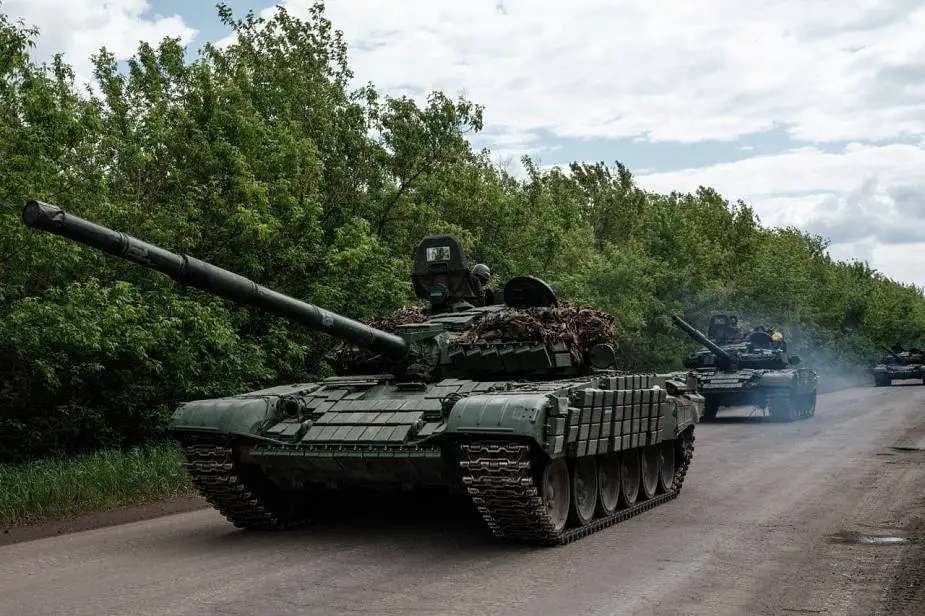- Army
- Conflicts in the world
- Israel - Iran conflict 2025
- Pakistan - India Conflict 2025
- Russia Ukraine War 2022
- Libya conflict day by day
- HAMAS - Israel War 2023
- Operation Serval in Mali French Army
- Sangaris operation Central African Republic
- Sangaris opération militaire République Centreafrique
- Ukraine - Russia conflict
- Syria conflict news
- Defence & Security Industry Technology
- Armies in the world
- Analysis Defense and Security Industry
- Conflicts in the world
- Navy
- Air
Polish T-72M1 tanks donated to Ukraine are now upgraded with ERA Explosive Reactive Armor
According to a picture released on Telegram on May 16, 2022, the Ukrainian army has already upgraded the T-72M1 donated by Poland with ERA (Explosive Reactive Armor), due to the poor protection of the T-72M1 against new anti-tank rockets and guided missiles.
Follow Army Recognition on Google News at this link

Polish T-72M1 main battle tanks donated to the Ukrainian army fitted with ERA Explosive Reactive Armor. (Picture source Telegram)
Just a reminder, On April 29, 2022, Army Recognition reported that Poland will provide more than 200 T-72 Main Battle Tanks (MBTs) to Ukraine. Citing Polish source, Poland has sent at least 240 T-72 tanks to Ukraine including T-72M1s and a modernized version of the T-72, the T-72M1R.
Explosive Reactive armor is a type of vehicle armor that reacts in some way to the impact of a weapon to reduce the damage done to the vehicle being protected. It is most effective in protecting against shaped charges and especially hardened kinetic energy penetrators.
In fact, the turret of the T-72 has conventional cast armor with a maximum thickness of 280 mm, the nose is about 80 mm thick and the glacis is of a new laminate armor 200 mm thick, which when inclined gives between 500 and 600 mm of protection. The latest generation of the Russian-made Kornet anti-tank guided missile fitted with a tandem HEAT warhead is able to penetrate 1,100-1,300 mm ERA (Explosive Reactive Armor) or 3 to 3.5 m of concrete.
The T-72 equipped with explosive reactive armor (ERA) increases protection primarily against HEAT (High-Explosive Anti-Tank) type weapons. In fact, recent rocket-propelled grenades used by Russian troops are equipped with HEAT warheads.
The Explosive Reactive Armor (ERA) installed on the T-72M1 could be effective against anti-tank weapons like the RPG-7 and its counterparts, which use HEAT warheads to engage targets.


























